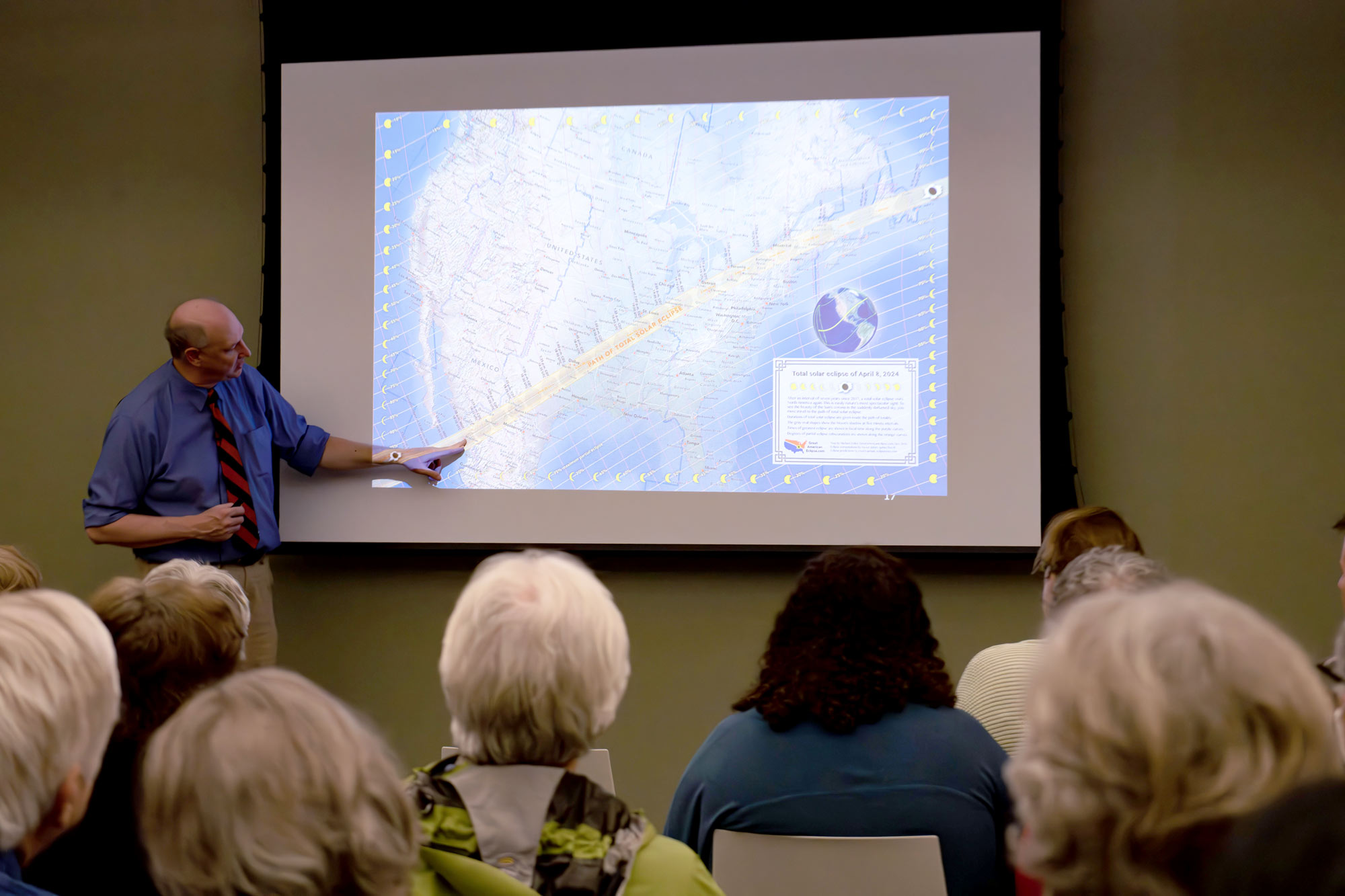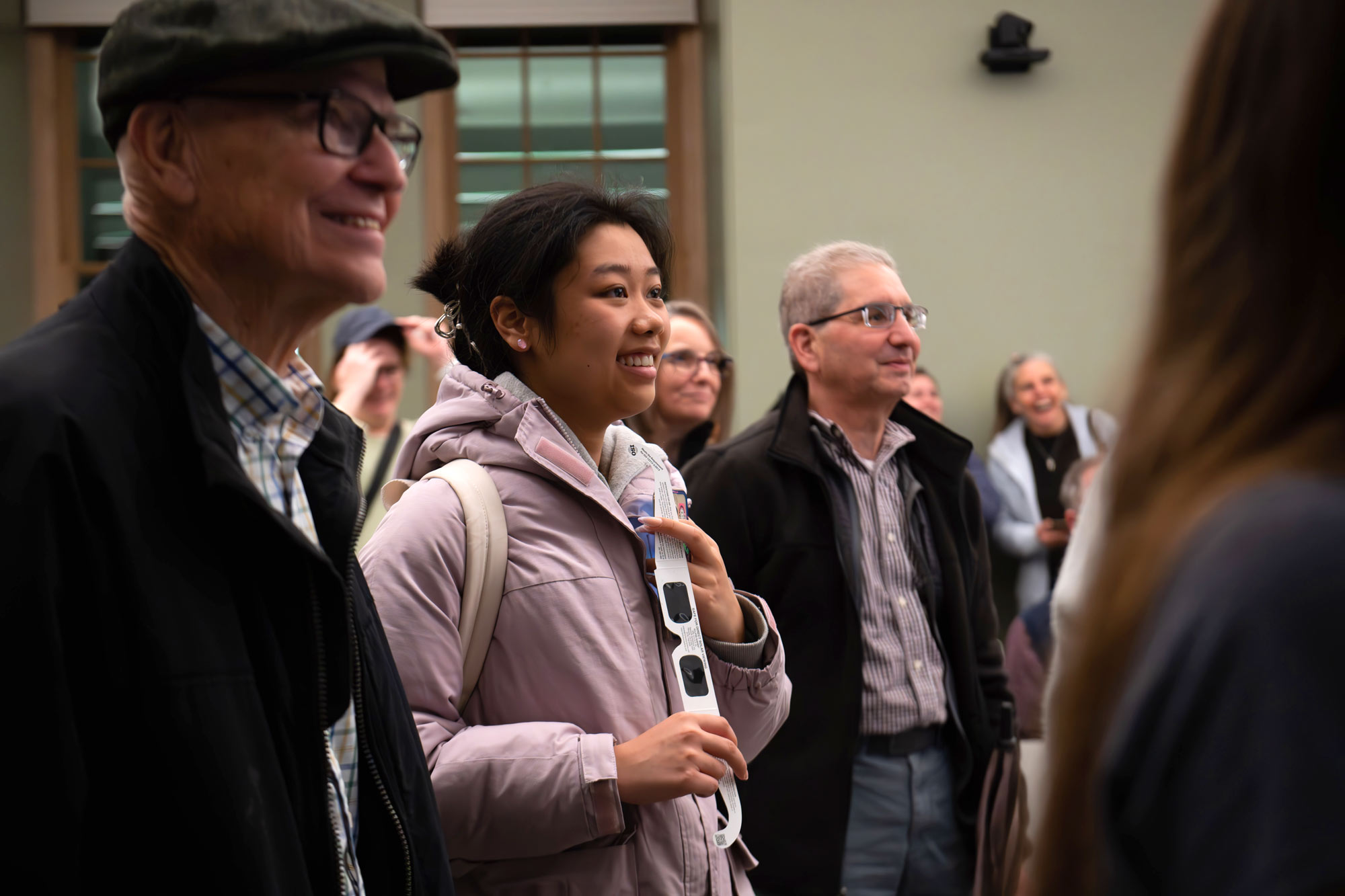On the afternoon of April 8, a wide swath of the United States will be plunged into darkness as the moon obscures the sun in a total solar eclipse.
This rare celestial event has prompted hotels in the "path of totality" to jack up prices and Delta Airlines to offer flights just to view the eclipse. Unlike the most recent total eclipse in 2017, this year's eclipse will be viewable across larger parts of the country, stretching from Texas to Maine. There won't be another total solar eclipse in the continental United States for 20 years, and it won't be as accessible to as many people, since it will mostly affect the Upper Midwest.
University of Virginia astronomy professor Ed Murphy recently held a workshop for K-12 teachers across Virginia, offered through UVA's Center for Liberal Arts. Educators learned what they need to know to teach their students about this once-in-a-generation event.
Murphy shared some of his eclipse do's and don'ts with UVA Today.
Do: Get in the Path of Totality, If You Can
The path of the eclipse travels from Mexico through Texas, Arkansas, southern Illinois, Ohio and beyond (NASA has a map of the path of totality). That means the April 8 eclipse is accessible to many people, even if they have to drive to another town to see it.
"Outside the path of totality, you won't really notice any changes in the world around you," Murphy said.

Charlottesville will be outside the path of totality, but you can still see a cool effect in Central Virginia. (Photo by Clara Castle, University Communications)
While the sunlight will be slightly dimmer, your eyes will adjust to the darkness. A pair of eclipse glasses can help you see the eclipse better.
Don't: Book a Hotel in the Totality Path
If you plan to travel for the eclipse, but haven't found a hotel yet, consider staying an hour or so outside of the totality path. Rates for rooms in towns directly in the path have spiked as much as 492%, according to Forbes, but prices for accommodations further out are more reasonable.
Do: Opt for Eclipse Glasses Instead of a Pinhole Camera
A pinhole camera will let you safely view the eclipse in a pinch, but Murphy recommends getting glasses if you can.
Pinhole cameras work by making a tiny image of the sun - usually so tiny that you can't see much detail.
"You can move the paper farther away from the pinhole and the image gets bigger and bigger, where you can see more detail on the sun. But it very rapidly gets so faint that you can't see the image of the sun."
Don't: Buy Your Eclipse Glasses From Unvetted Vendors
"Be sure that you purchase your eclipse glasses from a reputable dealer," Murphy said.

Part of Murphy's role at UVA involves science education for non-scientists. (Photo by Clara Castle, University Communications)
The glasses are typically sold in packs, and cost around $6 per pair. The American Astronomical Society has a list of vetted vendors whose glasses will let you safely view the eclipse.
Do: Look Up the Circumstances of the Eclipse Where You Are
Depending on where you are April 8, the eclipse will have different starting and ending times, plus a maximum eclipse time. You can enter your zip code on the Eclipse Soundscapes website to find out the details for when the eclipse hits your location.
Do: Make the Most of Maximum Eclipse Time
Once you know when the moon will fully cover the sun where you are, make sure you're prepared to take in the maximum eclipse.
"You'll want to look at the trees around you, because there are little holes between the branches and the leaves of the trees, and they form hundreds of little pinhole cameras," Murphy said.
If there aren't trees around you during the eclipse, you can get your colander out of your kitchen cabinet or even poke holes in a sheet of paper to see a similar effect.









